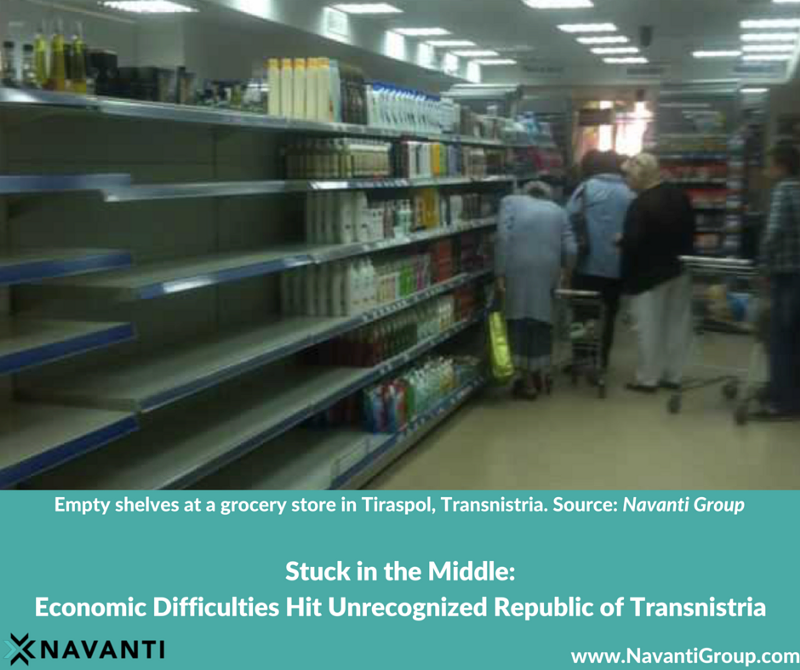Stuck in the Middle: Economic Difficulties Hit Unrecognized Republic of Transnistria

Since it declared independence in 1990, the economy of the 4,000 square kilometer strip of land between Moldova’s Dniester River and the Ukrainian border known as Pridnestrovian Moldavian Republic, or simply Transnistria, has been tied to the fortunes of its neighbors and Russia.
At every level, residents of Transnistria are feeling the economic pinch. Much of the economy of Transnistria is based on export earnings from selling goods to Moldova and Ukraine, and remittances from residents working in Russia. Moldova and Ukraine enacted trade restrictions in May 2015 to reduce Russian influence and increase their economic integration into the European Union, reducing Transnistria’s export earnings. As the Russian economy has suffered over the last two years due to sanctions and declining global energy prices, remittances also fell. Locals reported that family incomes have declined over the last 12 months and they are barely able to pay for housing and goods. This comes even as stores are facing shortages of goods.
>
“There is no work, no income either. The population is leaving in search of some kind of changes and wages. The cities are empty. There are no people on the streets [in Transnistria]. The stores and trading centers are empty and the business people ran off.”
>
“I want us to coexist peacefully with our neighbors. However, Ukraine, Moldova, and Transnistria became hostages of a larger game and decision about their future coexistence that will unfortunately not be decided in Kiev [Ukraine], Chisinau [Moldova] or Tiraspol [Transnistria], but in other capitals.”
As Russian rubles, Ukrainian hryvnia, and Moldovan lei all devalue, residents are also hoarding safer foreign currencies such as US dollars and euros. Most currency exchanges and banks in Tiraspol, Transnistria’s capital, are facing shortages of these currencies, forcing people to acquire the inflated Transnistrian ruble [.09 USD]. Even remittances have been paid in Transnistrian rubles rather than Russian rubles.
There is no problem in [Transnistria] with buying Ukrainian yrvania and Moldovan leev, but the situation for dollars and euros is completely different. There are no dollars or euros in the currency exchanges. [The local government] scared away the speculators, although they are still selling them at 15–16 rubles for a buck…The currency became weak because exports collapsed and we still have a negative trade balance — this means we are bankrupt, so there cannot be any good prospects by definition. — Female bank clerk, ethnic Ukrainian, Rybnitsa, Moldova
The Transnistrian ruble is kept artificially high, but changing its value would be more difficult than it appears. Transnistrian officials have warned that depreciating the currency would by law trigger automatic raises in pensions and government wages and could lead to higher levels of inflation.
Economic issues could also force Transnistria toward Moldova and the EU and away from its long time patron, Russia. Russia reportedly ceased sending pension supplements in the summer of 2014, as well as other economic aid and budgetary support. According to Transnistria’s own Customs Committee, 58% of the region’s exports in the first quarter of 2016 were sent to the EU, while only 6% were sent to the Russia-led Eurasian Customs Union. Further integration with the EU could face some challenges. Under Moldova’s August 2014 free trade agreement with the EU, Transnistrian businesses must conform to European labeling and safety laws for export to European markets. Transnistrian businesses exporting to the EU currently register their businesses in Chisinau and pass inspection by Moldovan officials. This could be difficult for some Transnistrian businesses.

